Can Tidying Up Result in Life-Changing Magic?
Marie Kondo’s book, The Life-Changing Magic of Tidying Up: the Japanese Art of Decluttering and Organizing did, indeed, change Emily Clay’s life. The Portland, Oregon, woman says that since reading the book she has divested herself of about “a ton” of clothes and books and, although she loves shopping, she has not refilled her shelves and closets. “It changed the way I view my stuff,” she says. “If I don’t love it or have not used it, read it or worn it, then I get rid of it.”
Beryn Hammil, a San Francisco Bay Area interior designer, had a similar experience. “I use, and encourage others to use, [Kondo’s] basic premise that you should keep something only if it gives you pleasure,” she says. “That single statement helps determine something’s place in my home and heart. It’s amazing how much clearer the energy in my home is now that I’ve eliminated things that were just stuff.” Hammil hesitates over the term “life changing,” though. “That may be too big of a statement,” she says. “Marriage, birth, death, moving homes — those are life changing. So, this doesn’t fit my criteria for life changing, but it certainly has affected how I feel about my home in a positive way.”
Photos by Natsuno Ichigo, Richie Bracamonte and Margot Hartford
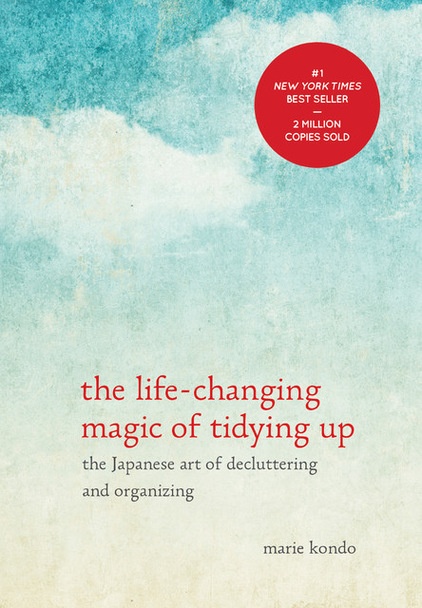
No matter what you think of the book’s assertions of magic, you can’t argue that it is a nearly supernatural publishing success. It has been at the top of the New York Times bestseller list in the Advice, How-to & Miscellaneous category for the past 23 weeks. At Amazon it is also a bestseller and ranked as the Best Book of 2014 in the Crafts, Home & Garden category. Capital letters on the book’s cover proclaim that there have been 2 million copies sold around the world — and it’s in its 13th printing since being released late last fall. With results like that, you would have to believe that people are desperate for existence-altering order. The question is, can Kondo, a professional organizer in Japan, fulfill the promise of the evocative title?
2 of Kondo’s Key Rules
After nearly a lifetime of practice, the Tokyo-based Kondo has developed what she calls the KonMari Method. Its essence is deceptively simple, but (I speak from experience) its implementation can be quite difficult, mainly because of our reluctance to part with possessions.
There are two key tenets to Kondo’s method: Keep only what inspires joy in your heart and organize by category, not spaces.
Keep what you love. In terms of “sparking joy,” a phrase Kondo uses often in her book, it can be summed up this way: If you don’t love it, get rid of it. Here’s the hard part: She advises a tough-love approach to parse out whether something makes you happy or if you are just simply hanging on to it.
Sort by type, not room. One of the primary things that makes Kondo’s approach different is her technique of purging by category. For example, instead of cleaning and organizing your master bedroom closet, she suggests tackling all of your clothes at once. Her point is that you likely don’t have garments stored in just one spot — for example, there are coats in the closet, T-shirts in a bureau, perhaps even seasonal clothes stashed in the attic. Experience has taught her that if you tidy by areas or rooms, the tidying never ends. Instead, she advocates performing the task by category and in one fell swoop. As she writes on the first page of her book, “Start by discarding. Then organize your space, thoroughly, completely in one go.”
That may be the first bit of advice, but there’s much more, in fact — 216 pages’ worth. Using a translator for an email interview, we asked Kondo to sum up her method.
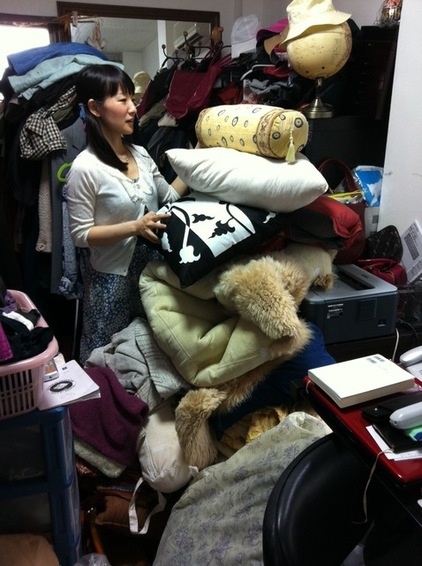
Tidying Step by Step
This is Marie Kondo at the start of that process in one of her clients’ closets. An old saying goes: “A journey of a thousand miles begins with a single step.” In Kondo’s world, the trip toward tidy begins by picturing how you want to live. She outlines the process succinctly in our interview:
1. Think of what is your ideal life. (In other words, how do you want to live?)
2. Gather items from each category and group them together (for example, lay all of your clothes out on the floor). She suggests starting with clothes first, then books and then documents.
3. Ask yourself, do these things spark joy? (“Take and touch each item, one at a time with your hands and feel if it sparks joy in you or not,” she says.)
4. Sort all goods and put them in their proper location after determining the place where each item should be.
Seems too easy, right? According to Kondo, what makes the method more difficult is the fact that many of us imbue our things with emotions. We hang on to items we don’t like because they were gifts; we allow books and papers to pile up in anticipation of reading them later; we refuse to let go of regrettable purchases because of the money we spent on them. “The purpose of the KonMari Method is to sharpen the sense of judgment of what items are important to oneself,” she says.
This is where the difficult part comes in, and Kondo has a simple remedy. In the words of Queen Elsa in Frozen, “Let it go.”
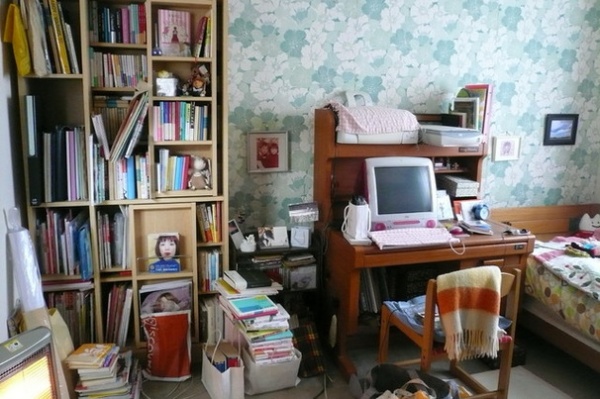
BEFORE: This is a before photo from one of Kondo’s clients in Japan. For many of us, the overflowing shelves and bags are familiar territory. It’s certainly a well-known sight to Kondo, and some of her advice may hit you where you live. She calls out people for forgetting what they have because it’s secreted away in a storage closet, for holding on to items because we think we will use them “someday” (she points out that “someday” never comes), and for passing off items to others because we feel guilty about throwing those things out. (Marie Kondo, you live in Toyko; how can you see inside my San Francisco closet?)
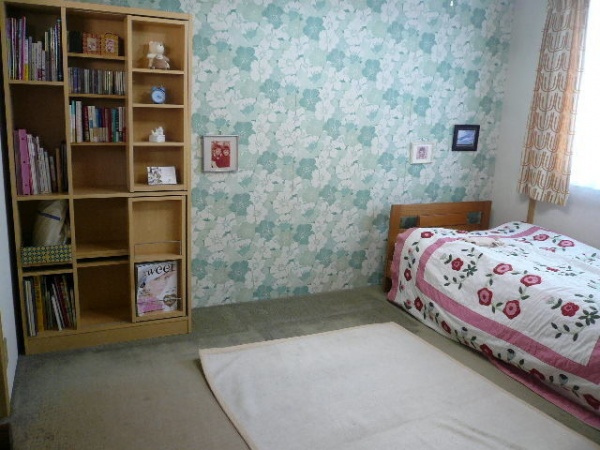
AFTER: Here’s the same room, after Kondo’s job was done. When Kondo provided photos of clients’ homes, her publisher cautioned that the Japanese rooms could look spare to American eyes. Indeed, with the desk relocated to another room and many items reduced, the room is much emptier.
But perhaps one person’s spartan is another person’s perfect. In her book, this is how Kondo describes her own home: “I have time to experience bliss in my quiet space, where even the air feels fresh and clean; time to sit and sip herbal tea while I reflect on my day. As I look around, my glance falls on a painting that I particularly love … and a vase of fresh flowers in one corner. Although not large, the space I live in is graced only with those things that speak to my heart. My lifestyle brings me joy.”
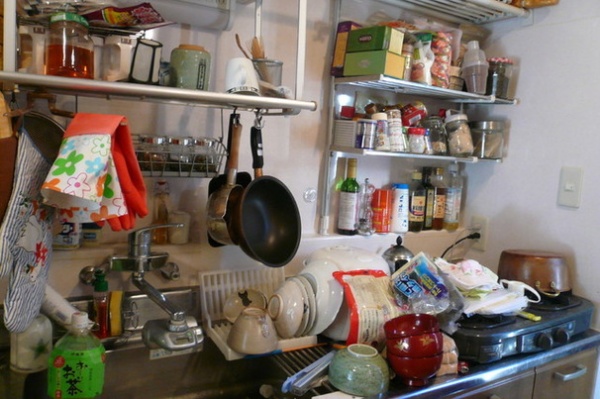
BEFORE: A no-less-dramatic transformation is seen in this Tokyo kitchen. Before Kondo reorganized, you can see the challenge the homeowner faced in the small space.
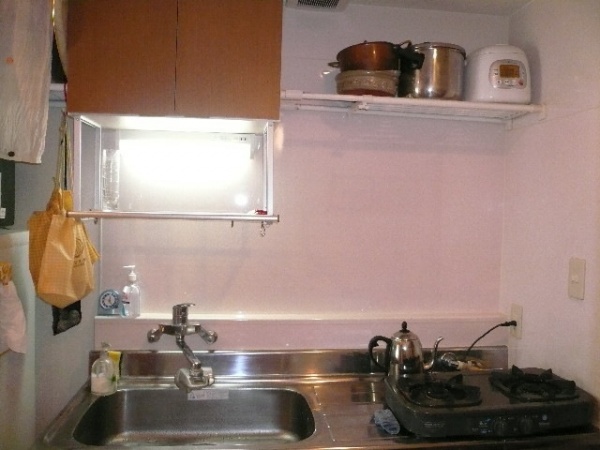
AFTER: Here is the same Tokyo kitchen after Kondo’s help. As you can see, it’s a whole new world.
What About Necessity?
Kondo’s rules could be hard for many people to follow, says Kaylee Whitworth, a professional organizer and owner of San Francisco’s Closeted. “I liked some of the ideas, but I don’t think all of them will work,” she says. One of her complaints is the idea of keeping only things that inspire happiness. “There are some things that we just need that don’t inspire excitement,” she says.
Kondo does address those categories, but her definition of what we need is stricter than most. For example, manuals? You can find them online. Books you haven’t read? You will never read them; unload them. Gifts from loved ones that you don’t use? Unburden yourself, she advises.
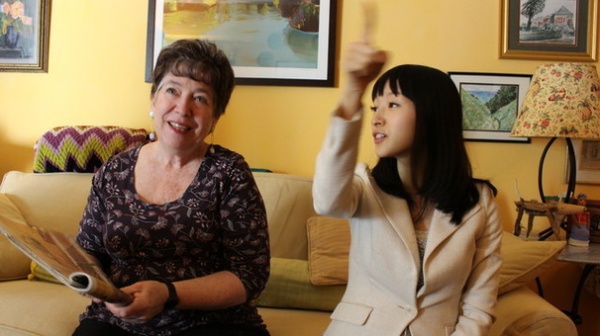
A California Case Study
As Whitworth says, “I think many people have a hard time implementing her ideas and sticking to them.” For a real-life example that’s closer to home than Japan, we asked Susie Shoaf, a San Franciscan who won a free consultation with Kondo in a contest. She is pictured here, at left, with Kondo during that meeting in her 900-square-foot townhouse in the Alamo Square neighborhood.
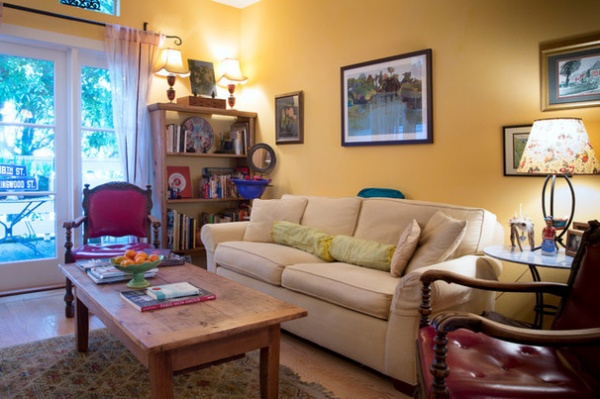
This is a photo taken of Shoaf’s living room after Kondo’s visit. “I thought it sounded fun, and I had been wanting to put my house in order for a long time,” says Shoaf, who knew of Kondo’s approach but didn’t read the book until she had won the contest. “Not only did I have a lot of my parents’ things, I had been collecting things in France and at the flea markets for a long time. Things began to accumulate, and it got to the point where I could barely walk into my storage closet. I was willing to try something new.”
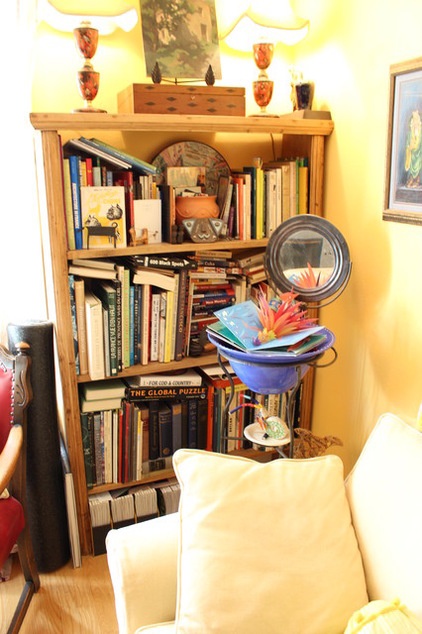
BEFORE: Although she mostly reads books from the library, Shoaf has a penchant for collecting art, design and travel books. This was her bookshelf just before she began purging under Kondo’s direction.
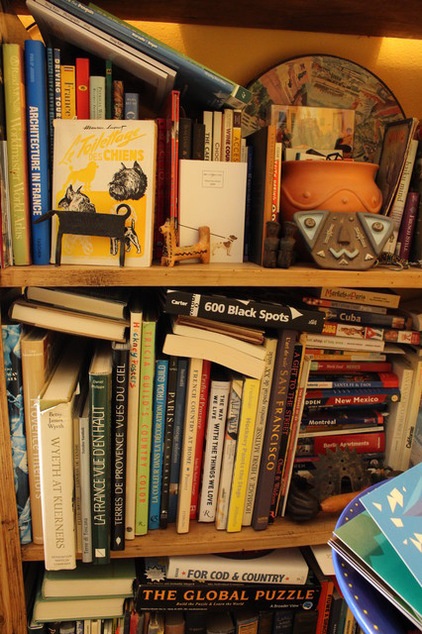
BEFORE: The prospect of getting rid of things was a daunting thought, but Shoaf says the knowledge that she could keep the things that she really loved was comforting.
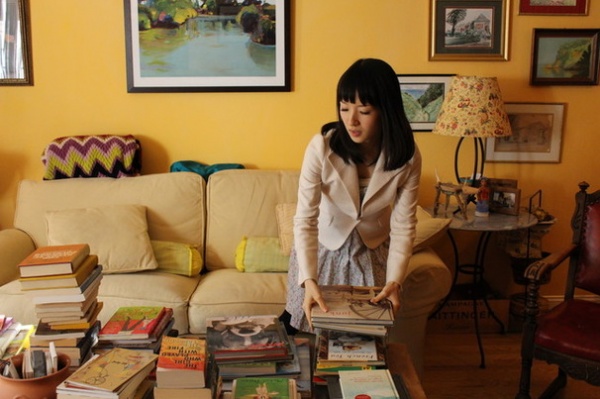
“She started by taking all of the books off the bookshelves, upstairs and downstairs,” says Shoaf. And, true to form, Shoaf was shocked by the number of tomes she possessed. (In her book, Kondo relates several examples of how people are stunned by the amount of things they own.) “She wasn’t judgmental at all,” the homeowner says. “But when I saw how many books I had accumulated, I knew I wanted to reduce and go into the project wholeheartedly.”
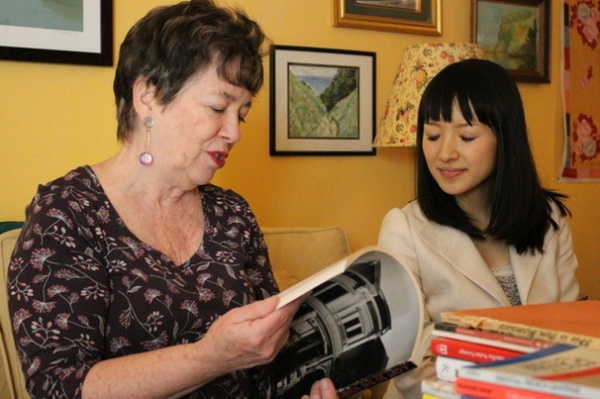
“First, [Kondo] patted each book, saying she was waking them up,” says Shoaf. “Then we sat down on the couch and picked up one book at a time. She asked me, through a translator, if each book sparked joy. If the answer was yes, it went on the pile on the left. If it was no, I put it on a pile to the right. I started with 300 books, and that day I got rid of 150.”
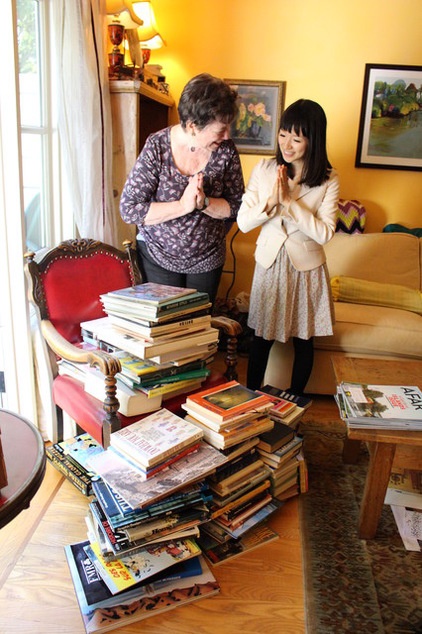
Once everything was sorted, Kondo suggested they bow to the books and thank them.
In her book, Kondo says thanking items for their service is an important part of helping to let them go. “Showing gratitude to the goods that you have possessed decreases the sense of guilt in getting rid of them, allowing you to feel more attachment to the goods you have left,” she writes.
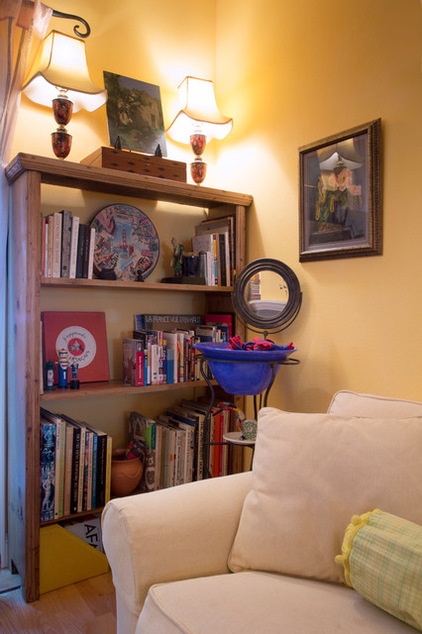
AFTER: The thought of purging that many books may be off-putting for many. But wherever you stand on the topic, you have to admit that the “after” bookshelf looks appealing. “I took seven boxes of books to Friends of the Library” (a San Francisco nonprofit that accepts book donations), Shoaf says. “It has made a huge difference, and I believe that really considering each book sped up the process and helped me make decisions about what really means something to me.”
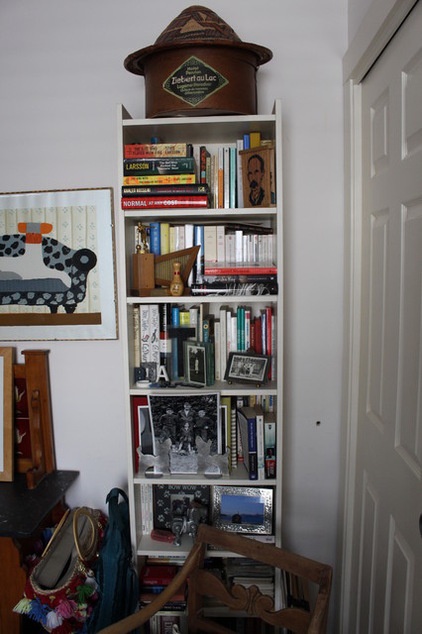
BEFORE: The difference is visible in the upstairs bookshelf as well. Shoaf describes the books’ arrangement before as “helter-skelter.”
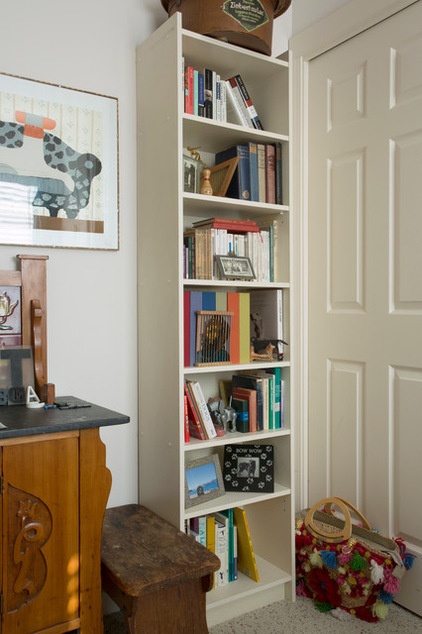
AFTER: Now, after the process, Shoaf is better able to see and appreciate her photos and accessories.
“The books you liked when you bought them can become unnecessary. Information in books, articles and documents is not valid for very long,” Kondo says. “Once you fill up a bookshelf with only the books that spark joy in you, it gets easier to notice and discard the books you don’t need anymore … and it becomes easier to keep bookshelves organized.”
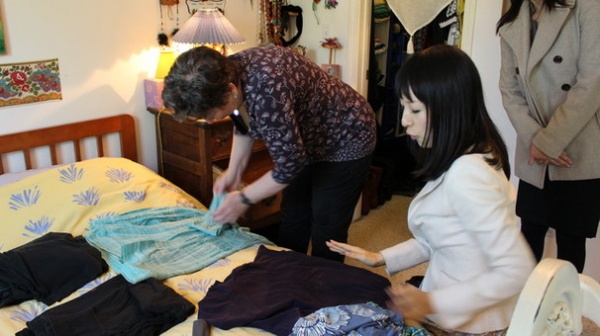
Kondo advocates a similar method for clothes: Pull them out all at once, decide what you really need and get rid of what you don’t.
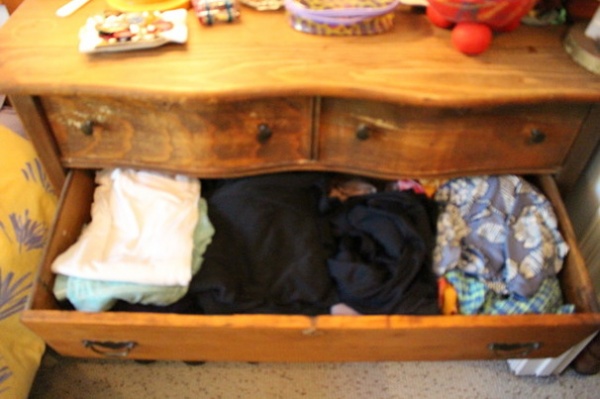
BEFORE: Shoaf also wanted to go over her folding method with Kondo. Here is one of Shoaf’s dresser drawers before being organized.
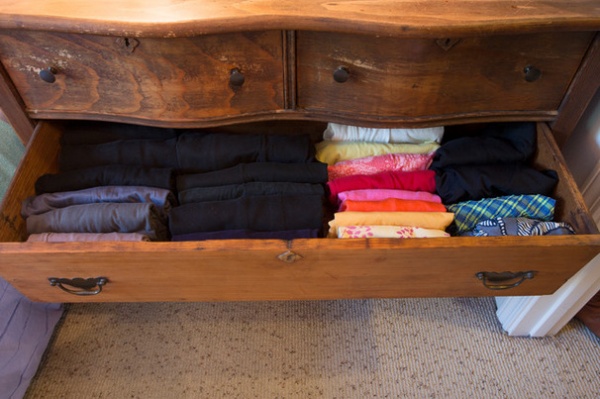
AFTER: Here is the same drawer after. Kondo is all about stacking clothes sideways, or “standing up,” as she says, rather than on top of each other. This, she says, is the key to storing clothes.
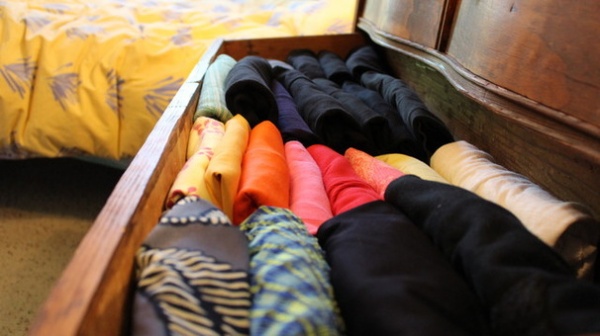
Another key: folding clothes in a compact rectangle.
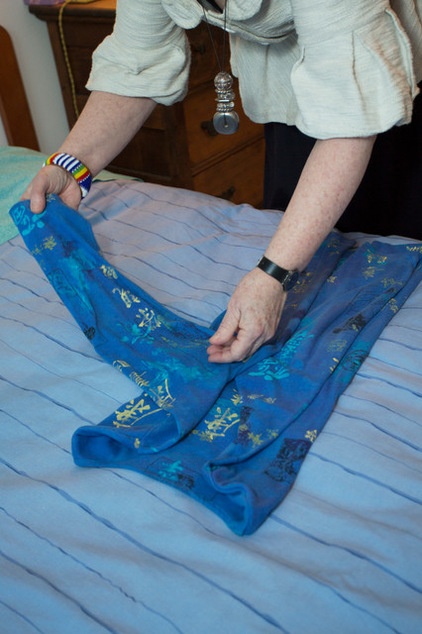
Shoaf demonstrates the method on a shirt:
1. Fold each lengthwise side of the garment toward the center and tuck the sleeves in to make a long rectangular shape.
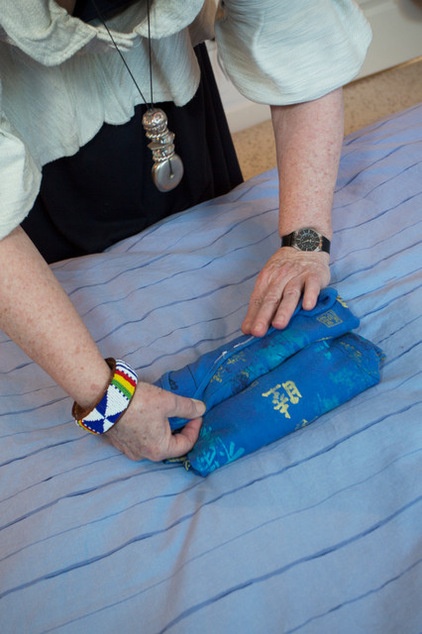
2. Pick up one short end of the rectangle and fold it toward the other short end.
3. Fold again, in the same manner in halves or in thirds. The number of folds should be adjusted so that the folded clothing fits in the drawer when standing up.
“My dresser drawers are beautiful now,” Shoaf says.
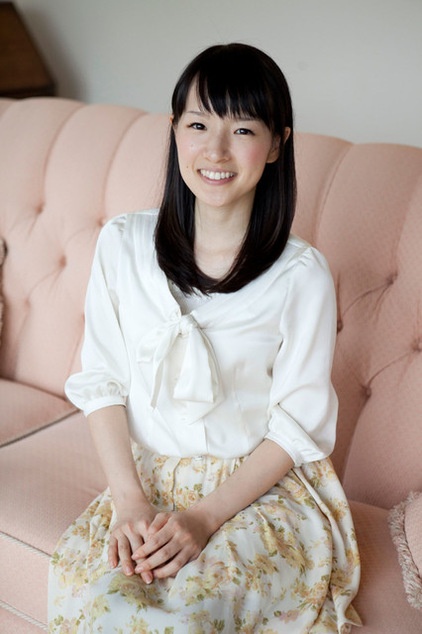
Tidying to Success
How does one become an international organizing superstar? In the first part of her book, Kondo talks about her start down the tidying path. From girlhood she was obsessed with cleaning and sorting. In our interview she said, “When I was 5 years old, I read lifestyle magazines for housewives that my mother subscribed to. That was the start of my interest in tidying up.”
As a young person, she also realized where she was going wrong. Until discovering a book called The Art of Discarding, by Nagisa Tatsumi, as a junior high student, Kondo had been engaged in a seemingly endless round robin of cleaning up. She’d organize one space, move on to the next, then the next, then the next — before returning to the first space and starting all over again. “I never seemed to improve no matter how often I did it — nowhere stayed tidy for long,” she writes.
But after reading Tatsumi’s book, the young Kondo realized what she really needed to do was push the reset button swiftly and decisively. She went home and shut herself in her small room for several hours. In her book she writes, “By the time I finished I had eight bags full of stuff — clothes I never wore, textbooks from elementary school, toys I had not played with in years, my eraser and seal collection. I had forgotten that most of these things even existed. I sat motionless on the floor for about an hour afterward staring at the pile of bags and wondering, ‘Why on earth did I bother keeping all this stuff?’”
That’s the question that launched a business with a months-long client waiting list and a book that has been read around the world.
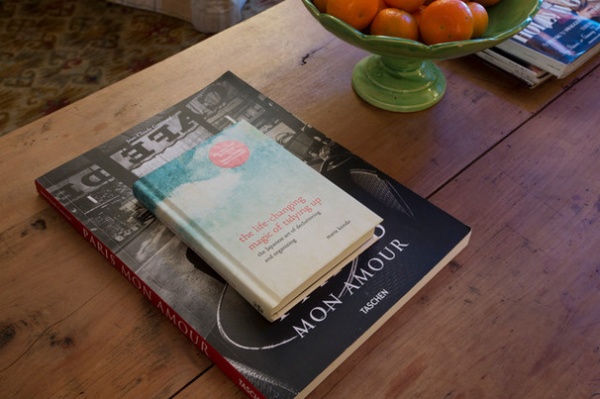
But Does It Work?
Which brings us back to the the initial question posed in the headline: Can tidying change your life?
Obviously, Kondo says yes. “The purpose of the KonMari Method is to sharpen the sense of judgment of what items are important to you,” she says. “Through this method you will see and know clearly what sparks joy in you equals your sense of value or criteria to live happily.”
Readers like Emily Clay agree. “The book has me questioning how much I have and how much I really need. I don’t regret getting rid of the things I had; I just regret that I spent money on them in the first place. Brooming all of those things was liberating,” she says. “Instead of buying another handbag or another pair of shoes, I’m saving for a trip to Italy.”
Have you read the book? If so, did it make a difference?












